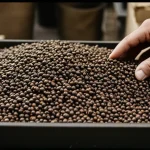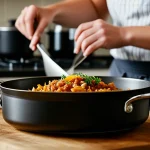Overview of Traditional UK Cooking Methods
Traditional UK cooking is a quintessential part of the nation’s cultural heritage and reflects a rich history through its enduring techniques. Traditional recipes have been passed down through generations, encapsulating the flavors and methods of the past. Central to these recipes are cooking techniques such as boiling, stewing, and baking, each pivotal in bringing out the distinct tastes of the region’s ingredients.
Historically, boiling was often employed due to its simplicity and effectiveness in tenderizing meats and extracting flavors, particularly in dishes like stews and broths. Stewing allowed for the merging of flavors over a longer cooking time, making it perfect for hearty meals that sustained families through cold winters. Baking, with its roots in community ovens, was not just a method of cooking but a communal event, bringing people together in the preparation of bread and pastries.
Preserving these methods is culturally important, as they connect current generations with their ancestors, conveying traditions and stories. In today’s fast-paced world, where culinary practices rapidly evolve, maintaining the essence of traditional UK cooking methods ensures that the culinary heritage remains vibrant and accessible, fostering a deeper appreciation for the nation’s rich and diverse history.
Modern Adaptations for Traditional Recipes
In the hustle and bustle of today’s world, modern recipe adaptations have become essential, enabling the enjoyment of classic UK dishes with greater convenience. These adaptations preserve the traditional flavors that are cherished while incorporating modern cooking techniques that streamline preparation.
Classic UK dishes, like the iconic shepherd’s pie, have seen innovations to suit contemporary tastes and schedules. For example, using modern appliances such as the slow cooker or instant pot can maintain the dish’s rich taste while significantly reducing cooking time. Similarly, traditional stews can be reimagined with quicker methods, like pressure cooking, which tenderizes meats and melds flavors efficiently without hours on the hob.
Modern technologies do not only enhance efficiency but also uphold the nostalgia associated with these dishes. By incorporating techniques like sous-vide, traditional recipes can achieve the same depth of flavor without lengthy traditional methods. This balance ensures that while the essence of traditional UK cooking is honored, the practicality of modern life is well accommodated.
Time-Saving Techniques for Busy Lifestyles
In today’s fast-paced world, finding efficiency in the kitchen is essential, especially when it comes to preparing cherished traditional UK dishes. One practical approach is meal prepping, which offers the benefits of enjoying home-cooked meals without the daily time investment. Preparing meals in advance not only saves time but also ensures that classic flavors are at your fingertips throughout the week.
Harnessing the power of quick-cooking techniques, such as using a pressure cooker or an instant pot, can also revolutionize the way traditional recipes are brought to the table. These modern appliances rapidly tenderize meats and blend flavors, preserving the essence of dishes like stews and casseroles in a fraction of the time. They are particularly effective for dishes that traditionally require slow cooking but need to be prepared quickly.
Moreover, batch cooking and freezing can be a lifesaver for those with hectic schedules. By cooking large quantities at once and storing in freezer-friendly portions, you can conveniently have a range of traditional meals ready to heat and serve. Not only does this technique save time, but it also minimizes waste and maximizes the use of ingredients.
Healthy Variations of Traditional Ingredients
In the evolving landscape of healthy cooking, adapting traditional UK recipes to align with contemporary dietary preferences and nutritional knowledge is key. Incorporating ingredient substitutions effectively bridges the richly flavoured past with the dietary needs of today.
Traditional ingredients like butter and cream can be replaced with healthier options such as olive oil or yogurt, reducing saturated fats while maintaining richness. Similarly, common components like potatoes might be alternated with sweet potatoes or cauliflower for those watching their carb intake. These swaps ensure that the essence of the dishes remains, while promoting a healthier lifestyle.
Seasonal vegetables play a transformative role in enhancing the nutritional profile of classic recipes. Integrating a variety of whole foods not only elevates the flavours but also maximizes the nutritional benefits. For instance, adding kale or spinach to a classic shepherd’s pie can provide essential vitamins without compromising taste.
Adapting recipes accordingly caters to a wide range of dietary restrictions. For vegan diets, traditional ingredients such as meat and dairy can be replaced with plant-based proteins and alternatives, such as lentils or tofu. Gluten-free options might include using rice flour or oats as substitutes in puddings and pastries, catering to those with gluten sensitivities.
By embracing these healthy variations, traditional UK cooking methods continue to thrive in modern kitchens, offering both nostalgic flavors and nutritional mindfulness.
Engaging Visuals and User-Friendly Formats
In today’s digital age, visual aids hold significant importance in enhancing the understanding and execution of traditional UK cooking methods. Photos and diagrams serve as guiding lights for both novice and seasoned chefs, simplifying complex steps into manageable processes. By visually breaking down techniques like boiling, stewing, and baking, these aids can make even the most intricate traditional recipes more accessible to home cooks.
Instructional videos are revolutionizing the way traditional cooking techniques are taught and experienced. Through visual storytelling, they showcase methods in action, offering viewers a front-row seat to culinary craftsmanship. Watching a dish come to life provides a dynamic and engaging learning experience, bridging the knowledge gap with practical demonstrations. Whether through YouTube tutorials or cooking shows, these videos cater to the visual learners among us, enriching their culinary journeys with clarity and precision.
User-friendly recipe layouts further enhance accessibility by providing clear, structured guidance. By using step-by-step instructions combined with relevant visuals, cooking enthusiasts can more confidently navigate traditional recipes. Such formats not only answer “how-to” questions with ease but also encourage exploration, yielding successful culinary outcomes. This blend of tradition with technology promotes wider appreciation and prepares the modern kitchen for an informed embrace of UK’s rich culinary past, accentuating both flavors and tradition.
Conclusion: Integrating Tradition with Modernity
In the dynamic world of culinary evolution, the blending of ancient and contemporary practices represents a remarkable journey. Combining tradition and modernity is not only about preserving beloved recipes but also about embracing innovation to meet current needs and preferences. As traditional UK cooking continues to evolve, it invites a harmonious balance between nostalgia and progress.
The ongoing evolution of cooking techniques reflects a respect for heritage while encouraging culinary exploration. With each modern twist on a classic dish, cooks pay homage to their roots while making these traditions relevant for today’s kitchens. Techniques like sous-vide and pressure cooking exemplify how old flavors can thrive when paired with new methods, ensuring that the essence of tradition is never lost.
Looking towards the future, trends in cooking will likely further this integration. Emphasis on health, convenience, and sustainability will continue to shape how traditional meals are prepared and enjoyed. Innovations in food technology and ingredient sourcing promise exciting opportunities for merging the charm of the past with the practicality of the present. Thus, the future of cooking welcomes creative adaptation, where the past and present cook together to create a flavorful tomorrow.










